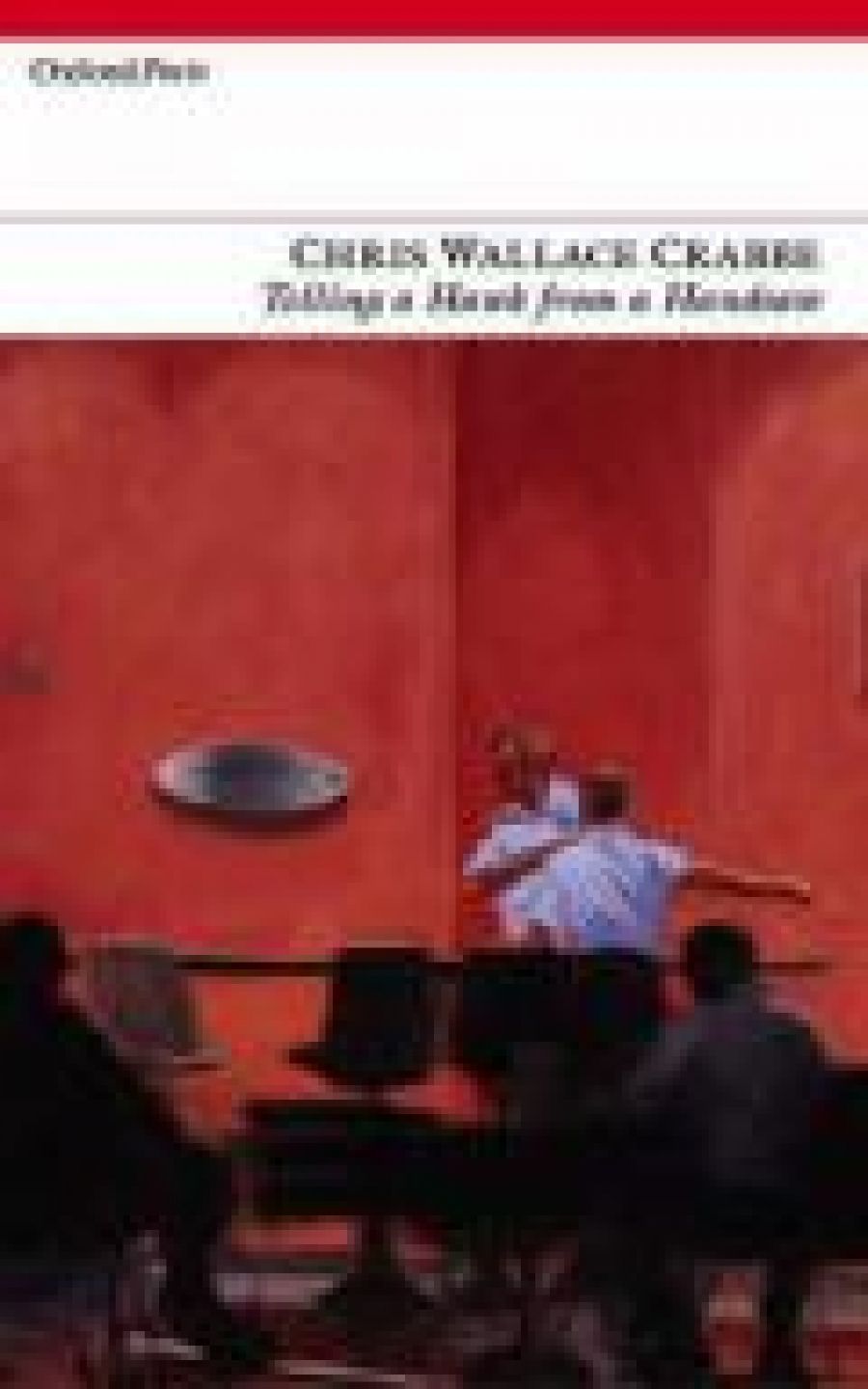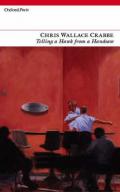
- Free Article: No
- Contents Category: Poetry
- Review Article: Yes
- Article Title: On the side of life
- Online Only: No
- Custom Highlight Text:
Chris Wallace-Crabbe has always had a good ear for a title, but Telling a Hawk from a Handsaw is surely his best. Half a century older than Shakespeare’s ghost-ridden poet–hero, he rings the changes on Hamlet’s high-fantastical play with language, by turns delighting and disconcerting an audience which might sometimes struggle to keep up with his leaps and ellipses. Ghosts and shadows abound in this distillation of his finest work from the last five years or so, but the intimations of mortality don’t mean that this book inhabits a Yeatsian ‘country for old men’. There are some curtains of Celtic darkness, but the soul of this poet–singer rejects tattered coats and sticks, swaggering, as the introductory poem has it, ‘On the Side of Life, / suntanned here in the lost antipodes / of childhood’s yellow beach and glaucous water’.
- Book 1 Title: Telling a Hawk from a Handsaw
- Book 1 Biblio: Carcanet Press, $29.95 pb, 71 pp
- Book 1 Cover Small (400 x 600):

Chilly Elsinore was not exactly a bonding ground for male friendship: how more fortunate than Hamlet is Wallace-Crabbe, who knows from years of Carlton lit-café life that ‘the appurtenance of welcome is fashion and ceremony’, enjoyable in its way, but only as a contrast to the more serious engagements of the anti-Rosencrantz and Guildenstern set. One of the highlights of this collection is his ‘Joy on the Very Edge of History’, addressed to Les Murray, his friend (however different their political views) and fellow-practitioner in the poetic art of the vernacular republic. The poem celebrates friendship and the ‘joy’ (a word, with its variants, frequently encountered in this volume) that accompanies those epiphanous moments of release from fears great and small:
A condition like this could be described as erotic,
being a time of spidery grevilleas
in flower, genuine spiderwebs grubbying
the old shed, bees in the lavender hedge
and an old roan munching tussocks.
‘Leaning Against the Golden Undertow’, dedicated to Dimitris Tsaloumas, another poet-contemporary, is made of darker stuff, but here, too, there is an affirmation of serenity and calm. Its conclusion – ‘Teasers and dreams, wrote the old ambiguist / so I chop these logs to prove I still exist’ – is a kind of Wallace-Crabbe signature, with its abrupt descent from lyricism to prosaic vernacular. When this works, the effect is to suggest a sensibility resolute, dogged, determined to make the most of what comes: ‘You pick up your old box of coloured pencils and start again.’
Some of the finest works in this collection are ‘series’ poems – carefully polished jottings, vignettes, entries in a kind of poetic diary – grouped under a common title. This is an art of juxtaposition, where hawks bump against hand-saws to invite fresh ways of apprehending both coherence and difference. ‘From the Island, Bundanon’ moves out from an image of the precise and the particular (in this case, eight ‘river-rubbed’ stones) to a meditative ‘design’ which links past and present, personal and abstract, the living and the dead. Wallace-Crabbe, ever the poetic sensualist, has a canny gift for calling up the textures, shapes and smells of ‘unaccommodated man’, one of several resemblances between his art and that of David Malouf. ‘The Domestic Sublime’ is a cluster of evocations of the quotidian – activities such as shaving and bedmaking, and objects such as saucers, coathangers and cloves of garlic. Poems of this order run the risk of slipping over into tweeness, but not here. Wallace-Crabbe’s are the verbal equivalents of the objects in a Flemish genre painting, or coming closer to home, of Kristin Headlam’s particularised portrait-interiors (she, incidentally, painted the moody interior used for the Carcanet cover). Is ‘Saucers’ in this sequence a kind of hommage to Gwen Harwood’s ‘Cups’?
In the 1960s Gwen Harwood had some tart things to say about bird subjects and titles in Australia: ‘When you start writing about the birds you’ve had it!’ (She was later to write some very good bird poems herself.) In this volume, there are flocks of them, although only one hawk and no heronshaws at all (‘handsaws’, Hamlet’s learned editors tell us). Wallace-Crabbe’s feeling for the avian part of the natural world goes beyond the simply descriptive, just as Harwood’s does, to speculations on the nature of language as sound and to an affirmation of the diversity of ‘creation’:
Red-rumped or grass parrots will start up under your feet
As you cross the far larger park, where softly spoken doves
And unwelcome starlings are also grazing: Ted Hughes
Likened the latter to blowflies. They have a nasty sheen.
(‘And Gathering Swallows Twitter’)
‘The Speech of Birds’ employs the voice of bird as suburban provider, busy with the keeping-life-going tasks of preserving children from danger, home repairs and so on; gentle and witty, the poem images the joyful busyness of living in the shadow of last things. Here is another of those characteristic ground-shifting endings:
Some days I can’t even hear
a melodious lovesong
from down the way
nor the clamant warning
that sparrowhawk is hovering now
somewhere above leafless
riding the breath of death.
Chris Wallace-Crabbe is among the most playful of Australian poets, intellectually sharp, often challenging his reader to enter the spaces between the lines. This latest volume continues to draw on the bittersweet memories of childhood, evoking from the perspective of present fears a sun-bathed and innocent suburban world. The penultimate poem in Telling a Hawk from a Handsaw may, I suspect, become one of those anthology pieces that reaches an audience not necessarily given to buying slim volumes. ‘Oh Yes, Then’ summons by name the poet’s four children, one in the eternal present of his early death, the others imagined as entering the ‘Then’ of not-far-distant middle age. The last stanza addresses his lover, whose presence is the more vividly realised through her not being named:
where will you be, the flamingly
joyous hearth of my heart?
I can’t get the answer, no matter how
I tune up the shawms of art.


Comments powered by CComment